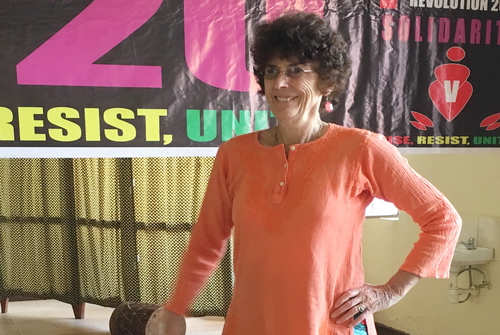The School of Dentistry’s Carole McArthur, MD, PhD, who has been on the cutting edge of international HIV research for many years, is part of a team of scientists who have discovered a new strain of HIV. It’s the first discovery of a new subtype of HIV-1 since 2000.
The new subtype is referred to as HIV-1 Group M, subtype L—and is part of the Group M viruses that are responsible for the global pandemic, which can be traced back to the Democratic Republic of Congo. The discovery was made as part of a research collaboration with Abbott Laboratories.
“In an increasingly connected world, we can no longer think of viruses being contained to one location,” said Dr. McArthur, one of the study authors. “This discovery reminds us that to end the HIV pandemic, we must continue to outthink this continuously changing virus and use the latest advancements in technology and resources to monitor its evolution.”
Dr. McArthur is the director of AfriHealth Partnerships International, conceived in the Department of Oral and Craniofacial Sciences at the University of Missouri—Kansas City. The program, initiated in 1995, fosters interdisciplinary studies between investigators in the U.S. and investigators in Africa to strengthen the local response to the detection, prevention and treatment of infectious diseases. For the past two decades, Dr. McArthur’s has worked on diagnostic system development and evaluation in Cameroon, South Africa and the Democratic Republic of Congo.
Concerning the current breakthrough, to determine whether an unusual virus is a new HIV subtype, three cases have to be discovered independently. The first two for this subtype were discovered in 1980s and 1990s; the third was collected in 2001 but difficult to sequence until now.
Today, technology allows researchers to build entire genomes at higher speeds, and partnering scientists at Abbott had to develop new techniques to confirm the discovery.
Mary Rodgers, PhD, one of the Abbott scientists who wrote the study with McArthur, said identifying viruses such as this one is like searching for a needle in a haystack; however, with new technologies it feels as if they are now “pulling the needle out with a magnet.”
“This scientific discovery can help us ensure we are stopping new pandemics in their tracks,” she said.
Abbott’s Global Viral Surveillance Program monitors HIV and hepatitis viruses, specifically, to ensure the company’s diagnostic tests remain up to date. And now that this new strain has been identified, they are able to detect it.
You can read the full release on PR Newswire.
The study was published in the Journal of Acquired Immune Deficiency Syndromes (JAIDS).
The development also has been covered by international media including CNN and her alma matter, the University of Otaga in New Zealand.


